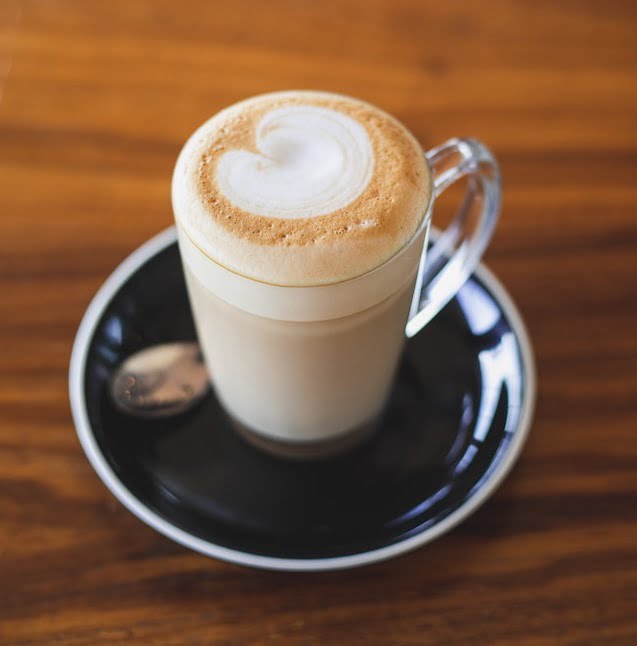Some people complain that Keurig coffee tastes burnt or bad, and others complain about the plastic aftertaste. This issue has been reported many times, and many are searching for a solution.
Keurig coffee that tastes burnt or bad is usually caused by a dirty machine. Descale the machine and clean the pod holder thoroughly. And always use high-quality k cups with fresh coffee grounds to ensure the best taste.
This article will focus on why Keurig coffee tastes burnt, bitter, or bad and some working tips on how to get a bitter taste out of your Keurig.

Key Takeaways
- Dirty machines are the top reason for burnt/bad-tasting Keurig coffee.
- Using stale coffee beans or old K-cups can also cause bad flavor.
- Use a 6 oz brew size for the best flavor.
- Choose Arabica beans and medium roasts to avoid a bitter/burnt taste.
- Add milk or lemon drops to help reduce bitterness if needed.
3 reasons why Keurig Coffee tastes burnt or bitter
1) Dirty Machine
Oil buildup from the remains of coffee grounds in the k cup holder is the leading cause of the burnt taste of your coffee.
Those remains of coffee grounds mix with coffee in the next brew and create an unpleasant taste.
If you don’t have a habit of cleaning the k cup holder after every brew then here’s what you’re doing wrong.
More on that later.
2) Usage of stale coffee beans or old K cups
You could be getting a bad-tasting cup of coffee from Keurig if you’re using old coffee grounds in reusable My K cups.
The best practice is to buy freshly roasted coffee beans and grind them just before brewing. I understand you bought the Keurig machine for its convenience, and grinding beans is a hassle.
You can use K-cups if you can’t grind coffee beans, as their specialized packaging keeps them fresh longer.
If you still want to use coffee grounds make sure to store them properly in an airtight container and buy them in small batches so they won’t go stale.
Also read: How Long K cups are good for
3) Improper coffee preparation method
The high-end Keurig models allow users to adjust the coffee’s strength and temperature.
Brewing coffee at high temperatures and high-strength settings can cause your Keurig coffee to be bitter.
Although high temperature and strength settings are perfect for strong coffee lovers some people might find it bitter and burnt.
If you are one of those, operate the Keurig machine at low temperature and strength settings.
As an Amazon Associate, I earn commission from qualifying purchases.
7 effective tips to make Keurig coffee taste better
While Keurig coffee machines are convenient, they often lack the quality and flavor of coffee brewed with manual machines.
However, Keurig machines can produce a decent cup of coffee, as long as they are properly maintained.
Let’s discuss some effective tips to make your Keurig coffee taste better.
1) Descale the machine
If you haven’t descaled your machine for more than 6 months then don’t cry over a bad cup of coffee and descale your machine as soon as possible.
Over time, minerals present in water build up inside the machines and make the taste of coffee burnt and bitter.
Descaling is the process of running vinegar or special descaling solution throughout the machine to eliminate mineral build and calcium deposits.
Here’s a step-by-step guide on cleaning and descaling your Keurig.
- Start by cleaning all the removable parts of the machine i-e the drip tray, capsule holder, and water reservoir.
- Now fill the water reservoir with half descaling solution or vinegar and half water. And run the descaling cycle.
- After descaling, run 1 to 2 rinsing cycles with hot water only. Otherwise, your coffee will taste like vinegar.
Here’s a complete guide on descaling Keurig for all different models.
It is highly recommended to descale the machine once every 3-6 months or after brewing 300 cups of coffee; whichever comes first.
2) clean the Needles
A Keurig coffee maker has two needles: one at the top and one at the bottom. These needles puncture the K-cup, allowing hot water to flow through and extract the coffee.
Used coffee grounds get stuck in the needles of the coffee machine after frequent use and eventually become hard and dry.
This situation is most likely to happen if you don’t discard your pods immediately after brewing or you don’t clean your machine regularly.
These coffee grounds slowly get mixed with your brew and make the taste bad. This can ruin your coffee experience and also cause other maintenance problems like Keurig Not making a full cup of coffee.
Follow these steps to clean the Keurig needles
- Turn the machine off
- Remove the K cup holder from the machine
- Detach the funnel from the pod holder by pushing it from the bottom.
- To remove any accumulated debris, insert the straight end of the needle into the hole of the pod holder and move it around several times.
- Rinse the pod holder with warm, soapy water.
- Now clean the upper entrance needles they can be found under the brewer’s head.
- To clean, insert a paper clip in each and move it around.
3) Wash water reservoirs and other removable parts regularly
To avoid oil and residue buildup from the old coffee grounds, regular cleaning of all removable parts is mandatory (drip tray, k cup holder, water reservoir).
If you don’t clean these removable parts the remains of old coffee grounds get mixed with your fresh brew and make the taste bad.
4) Choose the right Brew size
Most of the Keurig models offer three to five-cup sizes ranging between 4 oz and 12 oz.
In my experience, only a 6 oz Keurig brew size makes a perfect-tasting cup of coffee.
And there’s a reason for that most k cups have 0.3 to 0.4 ounces of coffee and the ideal coffee-to-water ratio for the drip coffee is somewhere between 1:15 (for strong taste) to 1:20 (for mild taste). That means you can only brew an ideal cup of coffee if you use brew sizes between 5 and 7 oz.
When you brew coffee at 10 and 12 oz brew sizes, it will be burnt or bitter. If you need a large cup, brew two small cups of 4 oz or 6 oz instead of one large one.
4) Choosing the right k cups or coffee grounds
The taste of your coffee drink depends upon the types of coffee beans (Arabica or Robusta) as well as the degree of roasting.
Dark-roasted or over-roasted coffee grounds can also result in burnt flavors. I am not saying the dark roast makes a bad cup of coffee but it’s surely not for everyone.
Dark roasts make a bold and intense cup of coffee with a bitter aftertaste and that is appreciated by strong coffee lovers. But other people might find it too bitter or burnt.
Robusta beans are also not bad either, they are high in caffeine and make a perfect blend with arabica beans that is loved by coffee enthusiasts.
But if you are strongly against the bitterness then robusta beans and Dark roasts are certainly not for you. Use only 100% Arabica and medium roasted beans for a smooth and flavorful cup of coffee.
5) Choose good-quality water
Some people use non-drinkable tap water for brewing coffee and think that the water filters inside the Keurig water reservoir make the water right.
It doesn’t work that way and that might be the reason for the bad-tasting cup of Keurig coffee.
Always use filtered drinkable water for brewing coffee. After all, brewed coffee is 98% water.
Read a guide on What is the Best water for Keurig Coffee Maker
6) Try Milk based coffee Drinks
If you are entirely against bitterness, I recommend going for milk-based coffee drinks rather than black coffee.
The sweet, creamy nature of the milk will cut the bitterness and delight you with its taste.
You can buy a Milk Frother for frothy drinks, or you can use just hot milk.

Also read: Keurig Latte Recipe
7) Add some drops of lemon Juice
If you don’t want to add extra calories to your diet by having milk-based coffee drinks then you can add some drops of lemon to reduce the bitterness.
The acidic nature of lemon juice will neutralize the bitterness and make the taste smoother.
Don’t add more than 3 to 6 lemon drops. Or you can also add just the lemon rind to brewed coffee to absorb all the bitterness.
How to Get the Vinegar Taste Out of Keurig after Cleaning or Descaling?
You have to run cleaning cycles to get the nasty taste out of Keurig after descaling.
Vinegar solution leaves a very strong smell and taste inside the coffee maker that’s why I recommend using descaling solutions specially made for Keurig machines.
Here’s how to clean the taste:
- Remove the coffee capsule or pod from the machine.
- Fill the water reservoir with water and run the brew cycle by pressing the largest brew size button.
- Ensure that there is no pod in the coffeemaker during this process.
- Repeat this cycle 2 to 3 times and brew coffee to check the taste.
- If you still can’t get rid of the vinegar taste, try adding ½ teaspoon of baking soda to the water tank full of water (It is known to neutralize vinegar and also has a very bland taste that offsets the bitterness).
- After running a cycle with baking soda again run a cleaning cycle with fresh water in the tank.
This will surely help you to get rid of the vinegar taste from the coffee.
The Keurig Rinse pods will also help in removing the vinegar taste from your Keurig after descaling.
Final Thoughts
There you have it, folks – the inside scoop on why your Keurig coffee may taste burnt or bitter and how to fix it. From descaling regularly to trying different pods, there are many ways to improve flavor.
Have any other tips for making your Keurig joe taste smooth and delicious? Let me know in the comments! I’d love to hear your go-to pods, preferred settings, and maintenance routines.
FAQs
Is it good to run vinegar through your Keurig?
Yes, Vinegar is a good descaling liquid for Keurig machines and you can certainly use it.
However, I always use and recommend dedicated descaling solutions as they work better and won’t leave a bad aftertaste.



